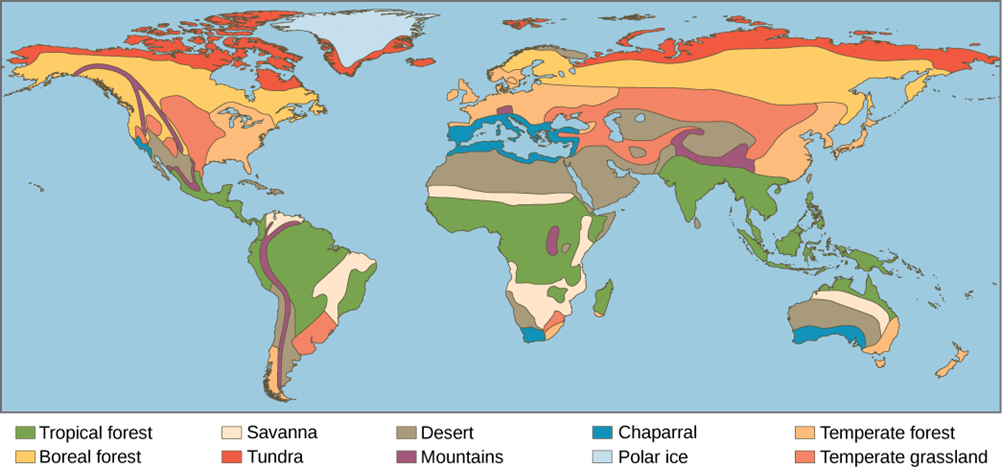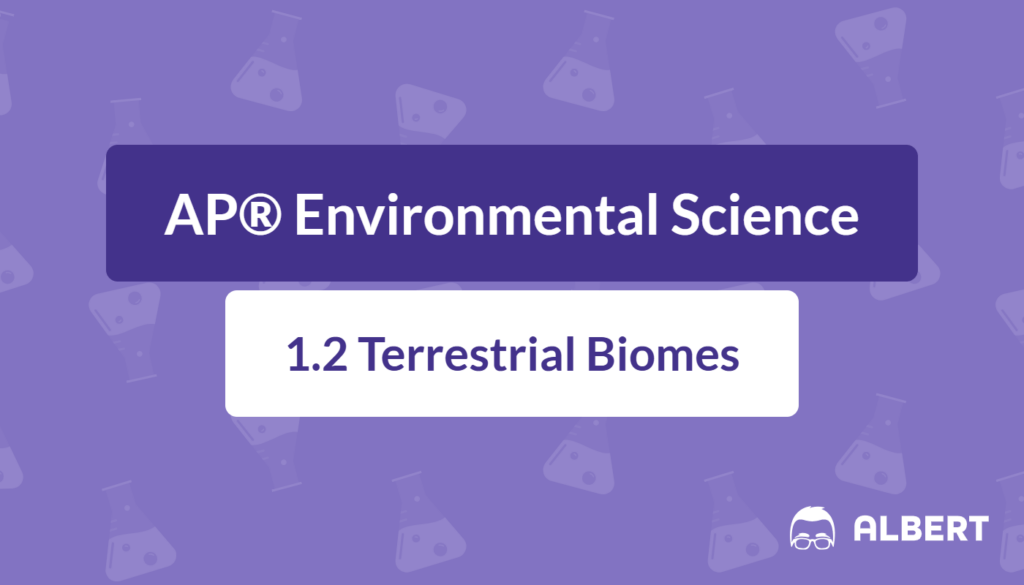What We Review
Introduction
Terrestrial biomes are large land regions that share similar climate conditions, soil types, and plant and animal communities. These regions are shaped by temperature, precipitation, elevation, and geographic location. Understanding these biomes helps illustrate how ecosystems function around the world. Moreover, studying them provides valuable insights into how environmental changes may alter habitats over time.
What Are Terrestrial Biomes?
A terrestrial biome is a region on land characterized by specific climate patterns and distinctive plant and animal life. Because climate directly influences temperature and rainfall, it plays a key role in determining which organisms can survive in a given area.
- Climate drives the distribution of vegetation, which in turn affects the types of animals present in each biome.
- Nutrient availability, altitude, and latitude also shape the unique environments found in terrestrial biomes.

Major Types of Terrestrial Biomes
This section explores nine major terrestrial biomes that are covered within AP® Environmental Science.
1. Tropical Rainforests
Tropical rainforests thrive in warm, moist environments near the equator. They have high biodiversity and dense canopies rich in plant and animal species.
- Climate: Consistently high temperatures and abundant rainfall year-round (often more than 2000\text{ mm / year}).
- Biodiversity: Extremely diverse plant and animal life, including several niche organisms.
- Soil: Often nutrient-poor due to rapid decomposition and nutrient uptake by vegetation.
Example Scenario:
“A hypothetical region averages a temperature of 25^\circ \text{C} and receives 2200\text{ mm} of rainfall per year. Which biome does it resemble?”
Step-by-Step Solution:
- Note the high temperature (around 25^\circ \text{C}) and heavy rainfall (2200\text{ mm} per year).
- Recall that tropical rainforests typically have high temperature and rainfall.
- Compare the data to common tropical rainforest values.
- Conclude that this climate is consistent with a tropical rainforest.
Practice Problem:
“If an area near the equator records an average annual precipitation of 3000\text{ mm} with minimal temperature variation, identify the biome and explain why.”
- Hints: Warm equatorial region, constant precipitation levels, extremely diverse flora and fauna.
2. Temperate Rainforests
Temperate rainforests occur in cooler, coastal areas with high rainfall. Therefore, they differ from tropical rainforests by their cooler temperatures and somewhat less species diversity.
- Climate: Cool temperatures with significant rainfall, often more than 2000\text{ mm / year}.
- Biodiversity: Abundant mosses, ferns, and large coniferous trees. Animal diversity varies.
- Soil: Generally rich in organic matter, but can be acidic due to conifer needles.
Example Scenario:
“A coastal region experiences mild temperatures (around 10^\circ \text{C} to 20^\circ \text{C}) and heavy rainfall averaging 2500\text{ mm} per year. Which biome does it most likely represent?”
Step-by-Step Solution:
- Identify the moderate temperature range.
- Observe the substantial amount of rainfall.
- Recognize that this pattern suits temperate rainforests rather than tropical ones.
- Conclude it is a temperate rainforest, such as those found in the Pacific Northwest.
Practice Problem:
“In the Pacific Northwest, a forest has thick undergrowth of mosses and receives 3000\text{ mm} of rainfall annually. What characteristic feature of temperate rainforests does this highlight?”
- Hints: Think about lush vegetation and abundant moisture.
3. Temperate Seasonal Forests
Temperate seasonal forests, also known as deciduous forests, experience seasonal temperature changes with warm summers and cold winters.
- Climate: Moderate rainfall, with distinct seasonal variations in temperature.
- Biodiversity: Deciduous trees like oaks and maples are common; a variety of mammals, birds, and insects.
- Soil: Nutrient-rich from leaf litter decomposition.
Example Scenario:
“An area has warm summers of about 25^\circ \text{C} and cold winters dropping near -5^\circ \text{C}. Annual rainfall is moderate at 1000\text{ mm}. Which biome is this?”
Step-by-Step Solution:
- Recognize the temperature extremes between summer and winter.
- Note the moderate rainfall (1000\text{ mm}).
- Recall that temperate seasonal forests experience four distinct seasons.
- Conclude that these conditions fit a temperate seasonal forest.
Practice Problem:
“A forest in the Eastern U.S. has vibrant fall colors and a temperature range between -10^\circ \text{C} and 30^\circ \text{C}. Explain how this climate supports a temperate seasonal forest.”
4. Taiga (Boreal Forest)
Taiga, or boreal forests, are found in the Northern Hemisphere. They have long, cold winters and short, mild summers.
- Climate: Harsh winters with low rainfall (much is locked in snow). Short growing season.
- Biodiversity: Coniferous trees (spruce, fir) dominate; animals adapted to cold.
- Soil: Acidic and nutrient-poor, due to slow decomposition and conifer needles.
Example Scenario:
“A region in Canada has harsh winters dipping to -20^\circ \text{C}, short summers around 10^\circ \text{C}, and conifer-dominant forests. Which biome is it likely to be?”
Step-by-Step Solution:
- Identify the very cold winter temperatures and brief summer warmth.
- Note the dominance of conifer trees.
- Associate harsh winters with the taiga.
- Conclude this region represents a boreal forest (taiga).
Practice Problem:
“If an area experiences six months of subzero temperatures and only coniferous trees grow, how does this align with features of the taiga biome?”
5. Temperate Grasslands
Temperate grasslands, such as prairies in North America, have hot summers and cold winters. They are known for their extensive grass cover and occasional fires that shape the vegetation.
- Climate: Moderate rainfall but not enough for many trees; large temperature swings between seasons.
- Biodiversity: Dominated by grasses; home to grazing mammals and burrowing rodents.
- Soil: Often fertile and used for agriculture.
Example Scenario:
“An inland area has hot summers, cold winters, and mostly grass vegetation with occasional shrubs. Annual rainfall is about 600\text{ mm}. Which biome does this reflect?”
Step-by-Step Solution:
- Note the continental climate with temperature extremes.
- Observe that tree growth is limited by moderate or low rainfall.
- Recognize the dominance of grasses.
- Identify the biome as temperate grasslands.
Practice Problem:
“Prairies in North America have few trees but highly fertile soil. How do sparse trees and fertile soil together confirm temperate grasslands?”
6. Savanna
Savannas are grasslands with scattered trees. They have seasonal rainfall patterns, often with a distinct wet and dry season.
- Climate: Warm year-round, with rainfall concentrated in one season.
- Biodiversity: Grasses dominate, along with individual trees like acacias. Large herbivores (zebras, giraffes) are common.
- Soil: Generally well-drained but can be nutrient-poor in some areas.
Example Scenario:
“African plains experience a distinct wet season with abundant rainfall, followed by a long dry period. Temperatures remain warm near 25^\circ \text{C}. Which biome do they represent?”
Step-by-Step Solution:
- Identify the single wet season followed by a dry season.
- Recognize the consistently warm temperatures.
- Note scattered trees and extensive grasslands.
- Classify it as a savanna.
Practice Problem:
“In a region where rainfall is concentrated from October to December and the rest of the year is dry, why might scattered trees rather than dense forests dominate this savanna biome?”
7. Shrubland
Shrublands, sometimes called chaparral or Mediterranean scrub, have hot, dry summers and mild, rainy winters. They are prone to periodic fires.
- Climate: Mild, wet winters and hot, dry summers.
- Biodiversity: Dominated by shrubs and drought-resistant plants; animals adapted to fires and dryness.
- Soil: Can vary, but often shallow with limited nutrients.
Example Scenario:
“A coastal region in California experiences dry, hot summers and mild winters with moderate rain. Dense shrubs with waxy leaves dominate. Which biome fits these criteria?”
Step-by-Step Solution:
- Identify the Mediterranean-type climate with dry summers and mild winters.
- Take note of the shrub-dominated vegetation.
- Recognize fire adaptations and drought resistance in plants.
- Conclude it is a shrubland (chaparral).
Practice Problem:
“In a region prone to wildfires each summer, plants often have fire-resistant traits. How does this reflect shrubland ecosystems such as chaparral?”
8. Desert
Deserts receive very little rainfall and vary in temperature. Hot deserts such as the Sahara can have scorching days and cold nights, while cold deserts endure freezing winters.
- Climate: Extremely low precipitation (often less than 250\text{ mm / year}).
- Biodiversity: Sparse plant life (cacti, succulents), animals adapted to conserve water.
- Soil: Often sandy or rocky with minimal organic matter.
Example Scenario:
“A region receives less than 200\text{ mm} of rain annually and is dominated by cacti. What biome is this?”
Step-by-Step Solution:
- Recognize the very low annual precipitation.
- Note specialized plants like cacti.
- Temperatures can be hot or cold, but dryness is key.
- Conclude it is a desert biome.
Practice Problem:
“How do water-saving adaptations in desert plants, such as thick waxy stems, correlate with extreme low rainfall?”
9. Tundra
Tundra regions are characterized by extremely cold temperatures, short growing seasons, and a layer of permanently frozen soil called permafrost.
- Climate: Very cold; short summers with low rainfall.
- Biodiversity: Low-growing vegetation like mosses and lichens; few animal species that are well-adapted to cold.
- Soil: Permafrost under surface layers.
Example Scenario:
“An Arctic region in the far north has permanently frozen ground, short summer thaws, and no tall trees. Which biome does this represent?”
Step-by-Step Solution:
- Identify permafrost as a hallmark of the tundra.
- Recognize extremely cold conditions and limited vegetation.
- Conclude that it matches the tundra biome.
Practice Problem:
“How does the presence of permafrost in the Arctic restrict the growth of tall trees, and why is this typical of tundra biomes?”
Factors Influencing Biome Distribution
Several factors influence the distribution of biomes across the globe:
- Climate (temperature and precipitation)
- Geography (continental position, rain shadows)
- Latitude (distance from the equator)
- Altitude (mountain elevation)
- Nutrient Availability (soil fertility)
- Soil Type (texture, moisture content)
For instance, deserts often form on the downwind side of mountains because moist air masses lose their water on the upwind side. Similarly, tundra is found at high latitudes and altitudes because air becomes colder with increasing height or distance from the equator.
Dynamic Nature of Biomes
Biomes are not static. Over thousands of years, climate shifts can change where certain biomes occur. Some areas that were once grasslands could become deserts if rainfall decreases. Likewise, warming temperatures might allow forest biomes to expand into areas previously too cold.
Historical evidence, such as fossil records, demonstrates past biome shifts. Therefore, ongoing global climate change may lead to noticeable changes in the distribution and composition of terrestrial biomes worldwide.
Conclusion
Terrestrial biomes are central to understanding environmental science. They illustrate how climate and geography shape life on Earth. . Understanding how biomes shift over time emphasizes the need for conservation. Therefore, ongoing research and observation are crucial for preserving biodiversity and natural resources.
Sharpen Your Skills for AP® Environmental Science
Are you preparing for the AP® Environmental Science test? We’ve got you covered! Try our review articles designed to help you confidently tackle real-world AP® Environmental Science problems. You’ll find everything you need to succeed, from quick tips to detailed strategies. Start exploring now!
Need help preparing for your AP® Environmental Science exam?
Albert has hundreds of AP® Environmental Science practice questions, free response, and full-length practice tests to try out.








